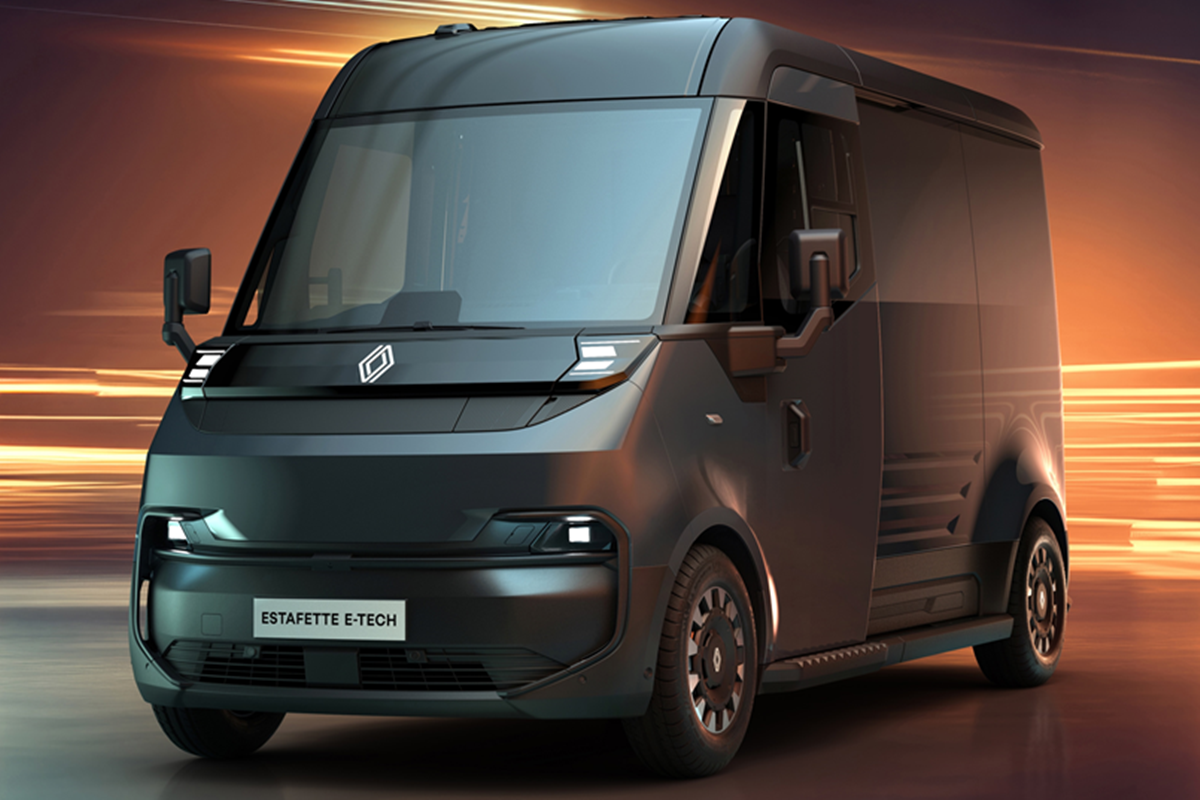
Renault is accelerating its entry into the electric commercial vehicle sector. The French automaker recently revealed three new electric models—Estafette, Goelett, and Trafic—marking a key step in its EV strategy. Each model blends modernized styling with Renault’s heritage, preserving unique character traits while reinforcing the brand’s overall identity. Developed by Flexis, a joint venture between Volvo Group and CMA CGM Group, these models combine practicality and advanced tech for urban logistics and professional use across Europe.
With these new models, Renault extends its Software-Defined Vehicle (SDV) architecture and innovative skateboard platform to the commercial vehicle segment. Built on a dedicated EV platform, they offer structural strength, flexibility, lower running costs, and tailored configurations. Renault aims to increase commercial vehicle productivity by leveraging its EV expertise.


Trafic E-Tech Electric: A New Chapter for Renault’s Flagship Van
The Trafic E-Tech Electric enters its fourth generation, focusing on balancing modern design and practicality. Since its debut in 1980, the Trafic has sold over 2.5 million units worldwide. The new electric version retains key features such as its one-box design, short front overhang, and long wheelbase. Positioning the wheels at the corners improves interior space and enhances maneuverability in city driving.
The vehicle is 1.9 meters (74.8 in) high. It fits easily into underground garages. Its high-tech front design features LED daytime running lights and a backlit logo, while the rear includes asymmetrical doors, 3D-style lighting, and a spoiler. The lower bumper uses durable black grain plastic for added practicality and resilience.
This model is designed to support customized transport operations. Its layout considers both driver and passenger daily needs. It will feature a connectivity-centered vehicle interface and a commercial-specific electric powertrain, positioning it as a strong candidate for adoption by major European logistics providers.

Goelett and Estafette: Heritage-Inspired Electric Vans for Modern Needs
The Goelett E-Tech Electric brings back a 1950s Renault favorite with modern improvements. Originally built between 1956 and 1965, the original Goelett was known for its toughness and adaptability. The updated model will come in chassis cab, box van, and dump truck formats to suit different industries. Rear-end design modifications allow easy customization, with options like running boards available.
The Estafette E-Tech Electric updates Renault’s popular 1960s van with EV technology. Though compact at 5.27 meters (207.5 in) long and 1.92 meters (75.6 in) wide, it offers a 2.6-meter (102.4 in) interior height, tall enough to accommodate adults up to 1.9 meters (74.8 in). This makes it ideal for navigating urban streets while maximizing cargo space. Features such as side sliding doors, a three-panel panoramic windshield, and rugged black grain exterior trim make it practical for deliveries.
Renault will produce these electric vans at its Saint-Dizier facility in France, targeting a market launch in 2026. While technical specifications are still forthcoming, these models are expected to impact the electric commercial vehicle landscape significantly. Analysts are watching closely to see how Renault’s revival of classic nameplates will influence the evolving EV sector.
























